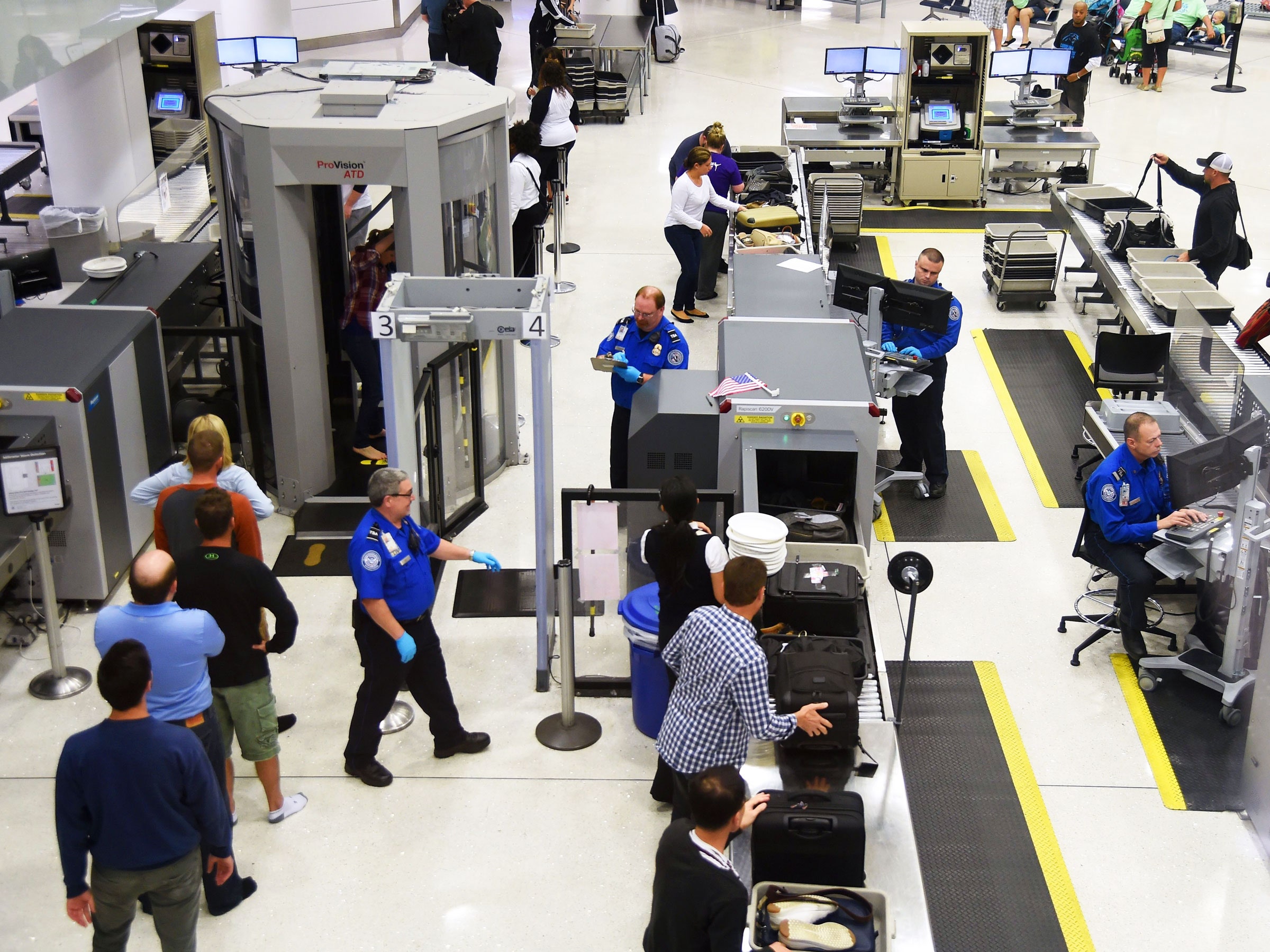Some passengers traveling through Denver International Airport this holiday season are in for a treat—or what amounts to a treat in today’s high-throughput, high-stress security environment. As they go through TSA screening, they’ll be able to keep their hands at their sides because of a new type of rapid body scanner. Instead of standing sideways in a plastic tube while a scanner shwoop shwoops around them, Denver fliers will step between two white plastic walls, about 4 feet apart. There are no moving parts, and the scan takes less than a second; if all is clear, the passenger moves on. The Denver scanner is built by Rohde & Schwarz, which also has a system up and running in Cologne Bonn Airport, Germany.
Not having to raise your arms over your head is a tiny improvement, but it's a big deal for people with limited mobility. And saving even a second per person adds up to shorter lines for everyone. The new scanner is an example of the booming, maturing field of full-body scanners. They are based on millimeter-wave technology, and they're giving security personnel the equivalent of Superman’s x-ray vision. (But without the x-ray radiation concerns.)
Millimeter waves are at the upper end of the radio band, at higher frequencies than Wi-Fi and just below the visible-light part of the electromagnetic spectrum that our eyes are sensitive to. (So-called 5G telecom networks, expected to arrive in the near future, will also use this end of the spectrum.) With the help of AI to analyze images on the fly, screeners can “see” through clothes, ignore skin, and red-flag suspicious shapes and objects.
These technologies have been in the lab for years, but it's the current push for better screening tech that's getting them commercialized. Current airport imagers are like a flatbed computer scanner. They build up a picture by sweeping a beam across a stationary subject, line by line. The next generation of scanners will be more like video cameras, capturing a whole, mobile, 3D environment. To do that, companies are developing antenna arrays for transmitters and receivers and building heavy-duty computer arrays to crunch the signals and make sense of them. Different materials reflect millimeter waves in characteristic ways, and AI can process the captured waves to assess if a lump on a body is metal, or a specific explosive, or just a harmless paperback book. Sensors aren't just seeing an obstruction, they're perceiving what the object is.
Liberty Defense is one company commercializing tech developed at MIT, and it is looking beyond airports to other situations where people need to be checked quickly and unobtrusively. “What we’re targeting is the urban security market,” says CEO Bill Riker. Think about what happens when you walk into into concert venues, sports arenas, or secure government buildings. Whereas now you might have to empty your pockets and walk through a metal detector, in the future you could stroll through a millimeter-wave scanner that could be built into walls or gates. Riker says emitters and receivers could be set up in a simple "paired" configuration, or multiple sensor panels could blanket larger areas and scan crowds walking up to stadiums, for example. They're capable of capturing images of people from up to 15 feet away.
Another company looking to make security less obtrusive is Evolv Technology, in Waltham, Massachusetts. It has installed a system at the Oakland Airport in California, not for passengers, but to screen employees as they come to work on the sensitive “air side” of operations, or as they move backward and forward several times a day from "land side."
Evolv’s millimeter-wave scanners look like bulked-up versions of the beepy theft-prevention gates near the doors of some stores, and they can grab an image in a fraction of a second, as opposed to a more typical two seconds. “That lets us screen people as they’re walking,” says CEO Mike Ellenbogen. The Evolv system can also use facial recognition to automatically detect people on a watch list.
For Ellenbogen, the ultimate goal is to make all security screens smoother, particularly as cities consider a more widespread use of scanners and other tools. (The LA Metro, for example, tested body scanners for passengers getting on the subway in August.)
So more-seamless security is on the way, but unless you’re flying through Denver, you won’t feel the benefit this holiday season. Just get to the airport early, and be ready for lines. Review the TSA restrictions on what you can and can't carry. And if you do get stuck in an interminable queue, pass the time being a security screener yourself, with London Heathrow Airport’s ever-popular “spot the dangerous objects” game—while you wait for the future of airport security to arrive.
[#video: https://www.youtube.com/embed/Z0-5r-CeZDI
- Alexa grew up this year, mostly because we talked to it
- 8 sci-fi writers imagine the bold and new future of work
- The mad scramble for the world's most coveted meteorite
- Galileo, krypton, and how the true meter came to be
- Everything you want to know about the promise of 5G
- 👀 Looking for the latest gadgets? Check out our picks, gift guides, and best deals all year round
- 📩 Get even more of our inside scoops with our weekly Backchannel newsletter
